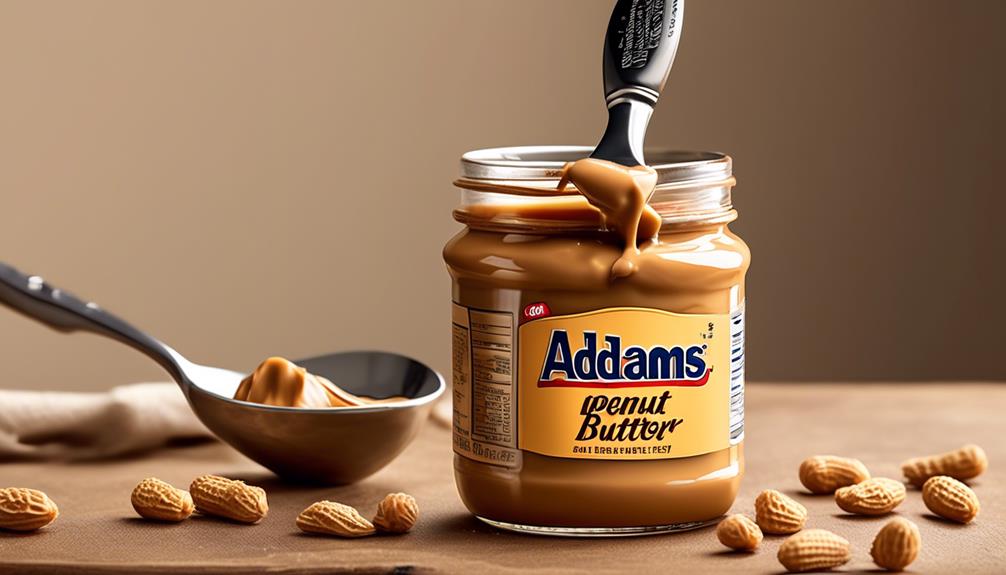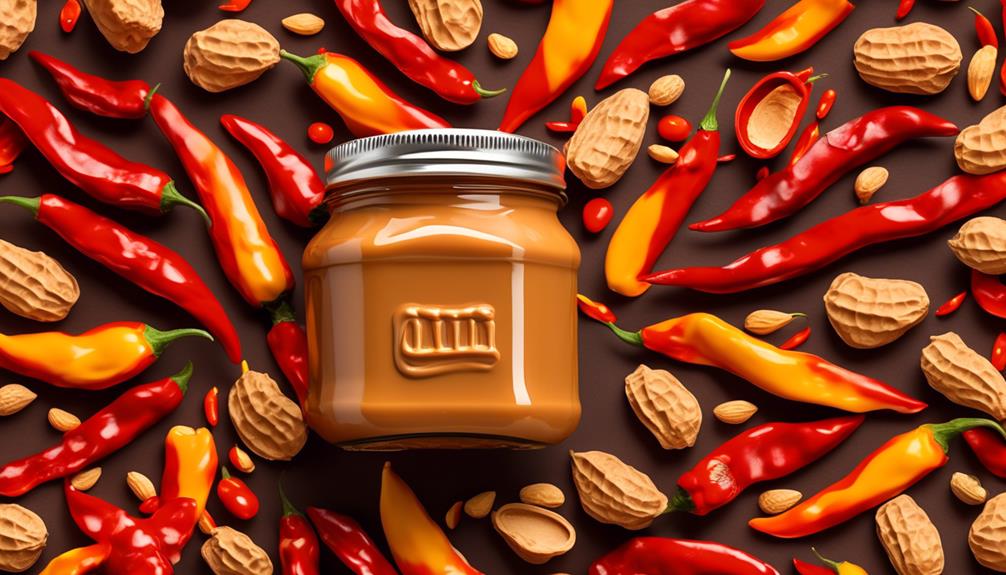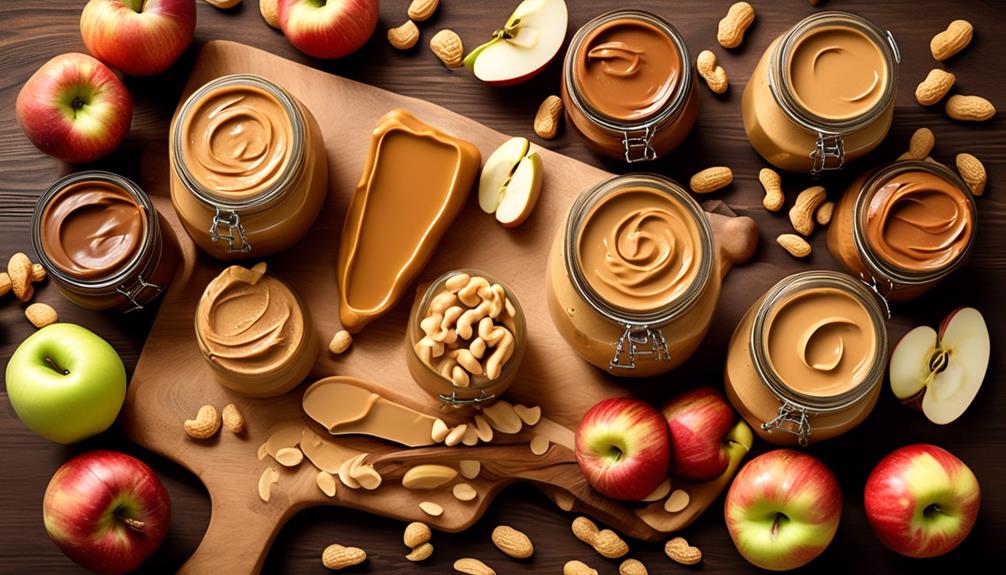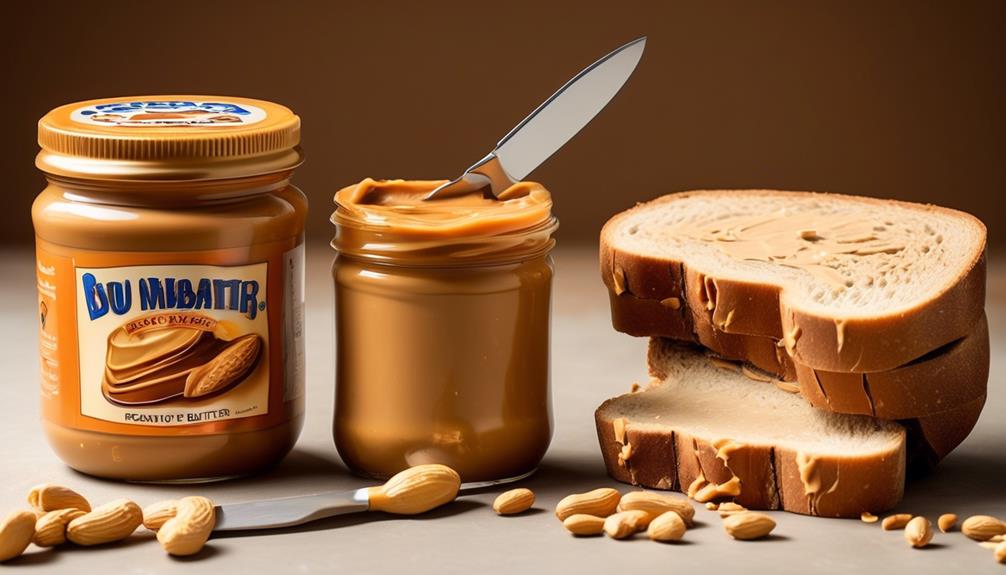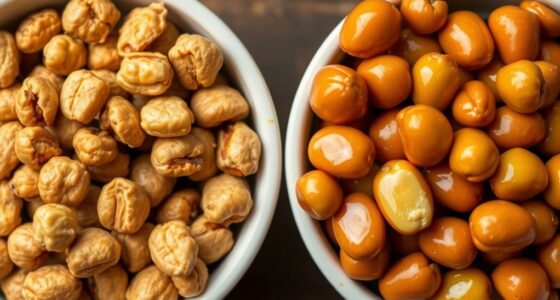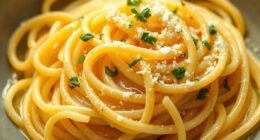Have you ever questioned why Adams peanut butter is so thin? It’s a common inquiry that crosses our minds while spreading it on toast or snacking.
The consistency of Adams peanut butter has led to much speculation, and in this discussion, we're going to explore the various factors that contribute to its unique texture. From the production process to the ingredients used, there are several elements at play that could explain why Adams peanut butter tends to be on the runnier side.
Join us as we delve into the world of Adams peanut butter and uncover the secrets behind its distinct smoothness.
Key Takeaways
- The runniness of Adams Peanut Butter is primarily caused by the separation of oil due to the high oil content in peanuts.
- The absence of stabilizers, emulsifiers, and hydrogenated oils in Adams Peanut Butter contributes to its runniness.
- Higher temperatures and humidity worsen the oil separation, while refrigeration results in a thicker consistency.
- Proper storage and stirring can help manage the consistency of Adams Peanut Butter.
Understanding Adams Peanut Butter Texture
We have observed that the texture of Adams Peanut Butter is notably runny, which is a characteristic commonly associated with natural peanut butter due to the separation of oil from the peanuts. This separation occurs as a result of the natural oils in the peanuts preventing the spread from maintaining a solid, uniform consistency.
The presence of excess oil in natural peanut butter, such as Adams, can be utilized for cooking or simply poured back into the jar and stirred to achieve the preferred consistency. The runny nature of this peanut butter makes it ideal for drizzling and spreading with ease, smoothly gliding onto food items like toast and pancakes.
However, it's important to note that watery peanut butter can occur due to the absence of stabilizers or emulsifiers, particularly in natural or homemade spreads. Furthermore, high temperatures can also contribute to a more liquid texture.
To address this, storing the peanut butter jar upside down can help redistribute the oil and achieve a more consistent texture and taste.
Factors Affecting Adams Peanut Butter Consistency

As we explore the factors affecting Adams Peanut Butter consistency, we'll examine how ingredient quality impacts the texture, the influence of the manufacturing process, and the role of temperature and storage conditions.
These key points will allow us to understand the specific elements that contribute to the runniness of Adams Peanut Butter.
Ingredient Quality Impact
The quality of ingredients plays a crucial role in determining the consistency of Adams Peanut Butter. This is especially true in relation to its natural oil content and the absence of stabilizers or emulsifiers. The natural oils present in peanuts are a key factor in the texture of peanut butter. They can cause separation from the solid components, leading to a runny consistency. The lack of stabilizers and emulsifiers in natural peanut butter can also contribute to oil separation, further impacting its texture.
It's important to note that high temperatures and humidity can exacerbate oil separation, resulting in a runnier consistency. However, the presence of an oily pool on top of natural peanut butter indicates its authenticity.
Proper storage, stirring, and incorporating the excess oil back into the peanut butter can help manage and adjust its consistency. This ensures a creamy and smooth texture.
Manufacturing Process Influence
The influence of the manufacturing process on Adams Peanut Butter's consistency is a critical factor that builds upon the impact of ingredient quality, particularly in managing the natural oils and texture of the product.
- The manufacturing process of Adams Peanut Butter plays a pivotal role in determining the final consistency of the product.
- The method of grinding the peanuts and the duration of the process directly affect the texture and oil distribution within the peanut butter.
- The temperature and humidity conditions under which the peanuts are processed can also influence the natural oil separation, ultimately impacting the product's consistency.
Understanding the intricacies of the manufacturing process is essential in addressing the runny nature of Adams Peanut Butter, ensuring a balance between the natural oils and the desired texture.
Temperature and Storage
When stored at higher temperatures, natural peanut butter's oils become more liquid, leading to a runnier consistency. This is because the oil rises and collects at the top of the jar, causing the peanut butter to be more liquid at room temperature. To prevent this, it is advisable to store it upside down, as the oil will rise to the bottom of the jar, making it easier to mix when needed. The table below summarizes the effects of temperature and storage on Adams Peanut Butter consistency.
| Temperature | Consistency |
|---|---|
| Higher | Runnier |
| Room | Liquid |
| Refrigerated | Thicker |
| Cool and dry | Maintained |
| Upside down | Prevents oil separation |
Understanding the impact of temperature and storage on natural peanut butter is essential for maintaining its desired consistency.
The Science Behind Adams Peanut Butter Runniness

Examination of the chemical composition of Adams Peanut Butter reveals the key factors contributing to its characteristic runniness. The runniness of Adams Peanut Butter, like other natural peanut butters, is primarily due to the separation of oil, a natural occurrence caused by the high oil content in peanuts.
This lack of stabilizers, emulsifiers, and hydrogenated oils, which are common in other peanut butter brands, also contributes to its runniness. Additionally, the absence of these additives aligns with the standards set by the US, which dictate that for a product to be labeled as peanut butter, it must contain at least 90% peanuts.
This emphasis on natural ingredients leads to the extra oil separating more readily from the ground peanuts, resulting in the runny consistency admired by many.
Uncovering Adams Peanut Butter's Smooth Texture Secrets

Adams Peanut Butter's smooth texture secrets lie in its unique blend of natural ingredients and the absence of stabilizers and emulsifiers, allowing the pure peanut oil to enhance its authentic consistency. The runniness of Adams Peanut Butter is a sign of its naturalness, as the separation of extra oil is a common characteristic of pure peanut butter. This extra oil, derived solely from the peanuts, not only contributes to the smooth texture but also presents an opportunity for culinary creativity, as it can be utilized for cooking to infuse dishes with a rich peanut flavor.
The absence of stabilizers and emulsifiers in Adams Peanut Butter is crucial, as these additives are often responsible for the artificially thick and sticky texture found in many commercial peanut butter brands. By refraining from incorporating these agents, Adams allows the natural oils in the peanuts to dictate the product's texture, resulting in the smooth and runny consistency that distinguishes it from other peanut butters.
In essence, Adams Peanut Butter's commitment to using natural ingredients and eschewing stabilizers and emulsifiers is the key to its irresistibly smooth texture, making it a favorite for those who appreciate the authentic character of pure, natural peanut butter.
Exploring Adams Peanut Butter's Creamy Consistency

When examining Adams Peanut Butter's creamy consistency, we observe the impact of its ingredients on the overall texture.
Understanding the interplay between the natural oils and other components in Adams Peanut Butter provides insight into its unique creaminess.
Peanut Butter Texture
We can discern the quality of natural peanut butter by evaluating its consistency, which is a result of oil separation and a hallmark of authenticity. When examining peanut butter texture, it's important to consider the following points:
- Excess Oil: Natural peanut butter may appear runny due to extra oil separation. This can be stirred back in for a creamier consistency or utilized for cooking purposes.
- Versatile Usage: Runny peanut butter, such as Adams Peanut Butter, is ideal for drizzling, easy spreading, and enhancing a wide array of dishes due to its creamy texture.
Understanding the oils that make peanut butter runny and the benefits of its creamy consistency sheds light on the uniqueness of natural peanut butter like Adams. This insight helps consumers appreciate the distinct characteristics and versatility that natural peanut butter offers.
Ingredient Impact
With natural peanut butter, the creamy consistency and texture of Adams Peanut Butter are influenced by its ingredients, particularly the oil from the peanuts. When peanuts release their oils, the texture of the peanut butter becomes runny, creating a smooth and spreadable consistency.
This natural separation is a result of the absence of added stabilizers or hydrogenated oils, which are often found in conventional peanut butter. The oil on top of Adams Peanut Butter can be incorporated back into the spread for a preferred consistency or used for cooking.
This ingredient impact distinguishes natural peanut butter from its conventional counterparts, providing a unique texture and appearance. Understanding the influence of ingredients, particularly the oil content, is crucial for appreciating the distinct creamy consistency of Adams Peanut Butter.
Decoding Adams Peanut Butter's Runny Nature

Adams Peanut Butter's runny consistency has been a subject of scrutiny, prompting an investigation into the factors contributing to this unique characteristic. When it comes to decoding Adams Peanut Butter's runny nature, we've delved into the specifics to uncover the reasons behind its delightful, spreadable texture. Here's what we've found:
- Natural Goodness: Adams Peanut Butter prides itself on being a natural product, free from stabilizers, emulsifiers, and hydrogenated oils. This commitment to natural ingredients contributes to the runny nature of the peanut butter, allowing the delicious goodness of the peanuts to shine through.
- Extra Oil Benefits: The runniness is a result of the natural oils in the peanuts, offering a smooth and effortless spread, perfect for drizzling over snacks or incorporating into recipes.
Adams Peanut Butter's runny nature isn't a flaw but a unique feature that enhances its versatility. Whether you're spreading it on toast or using it in cooking, the extra oil in this natural peanut butter adds a delightful touch to your culinary creations.
Frequently Asked Questions
Why Is Some Peanut Butter More Runny?
Some peanut butter is more runny due to the absence of stabilizers and hydrogenated oils. This separation of oil from peanuts in natural peanut butter signifies authenticity and lack of added unhealthy oils. Excess oil can be used for cooking or stirred back in for preferred consistency.
Runny peanut butter is ideal for drizzling, spreading easily, and enhancing various dishes.
Methods to fix watery peanut butter include stirring, refrigerating, and adding ground peanuts or thickeners like xanthan gum.
Why Is Jif Peanut Butter Runny Now?
Jif peanut butter is runny now due to oil separation, a natural process in authentic natural peanut butter. This occurs when the oil separates from the ground peanuts. It's a sign of its lack of unhealthy hydrogenated oils.
The excess oil can be poured out and used for cooking or refrigerated to prevent separation. Runny peanut butter is beneficial for drizzling and spreading easily, making it a versatile option for various foods.
How Do You Keep Adams Peanut Butter From Separating?
We keep Adams peanut butter from separating by storing it upside down. This helps redistribute the oil, ensuring a more consistent texture and taste.
Refrigerating the peanut butter also prevents oil separation for a longer period. Excess oil can be poured out and used for cooking or stirred back into the jar for preferred consistency.
Runny peanut butter is great for drizzling, spreading, and adding to dishes, making it versatile.
How Long Does Adams Natural Peanut Butter Last After Opening?
After opening, Adams natural peanut butter can last for 2-3 months in a cool, dry place. If refrigerated, its shelf life extends to 6-9 months.
It's crucial to check for signs of spoilage, like an off smell or taste, and discard if present. To maintain consistency, stir the oil back in and store the jar upside down.
Oil separation is a sign of authenticity and naturalness.
Conclusion
In conclusion, the runniness of Adams peanut butter can be attributed to several factors such as oil separation and the grinding process.
Understanding the science behind its texture and exploring methods to thicken the spread can help maintain a smooth and creamy consistency.
By taking into account these factors, consumers can better appreciate the unique nature of Adams peanut butter and make informed choices when it comes to storage and consumption.
